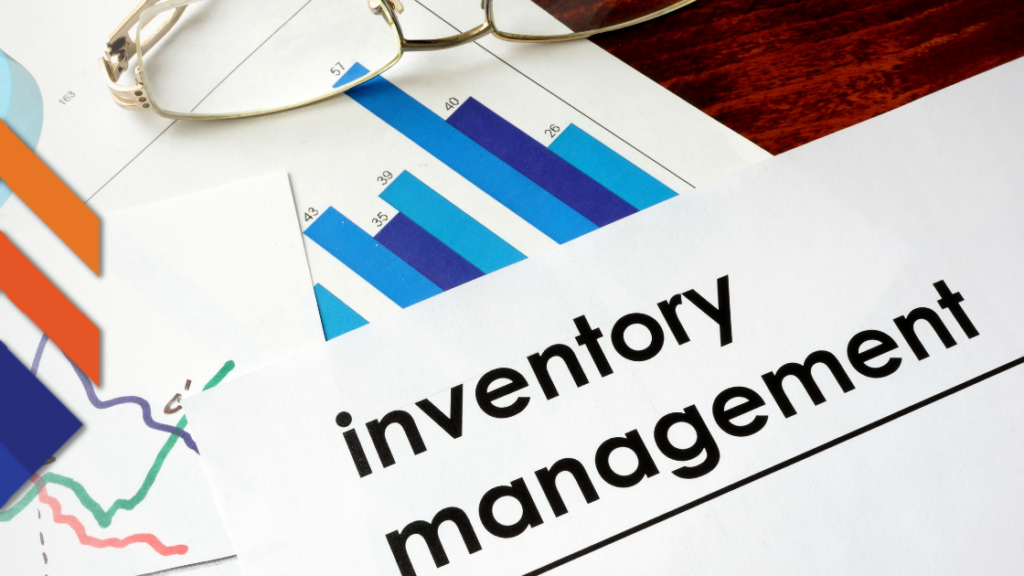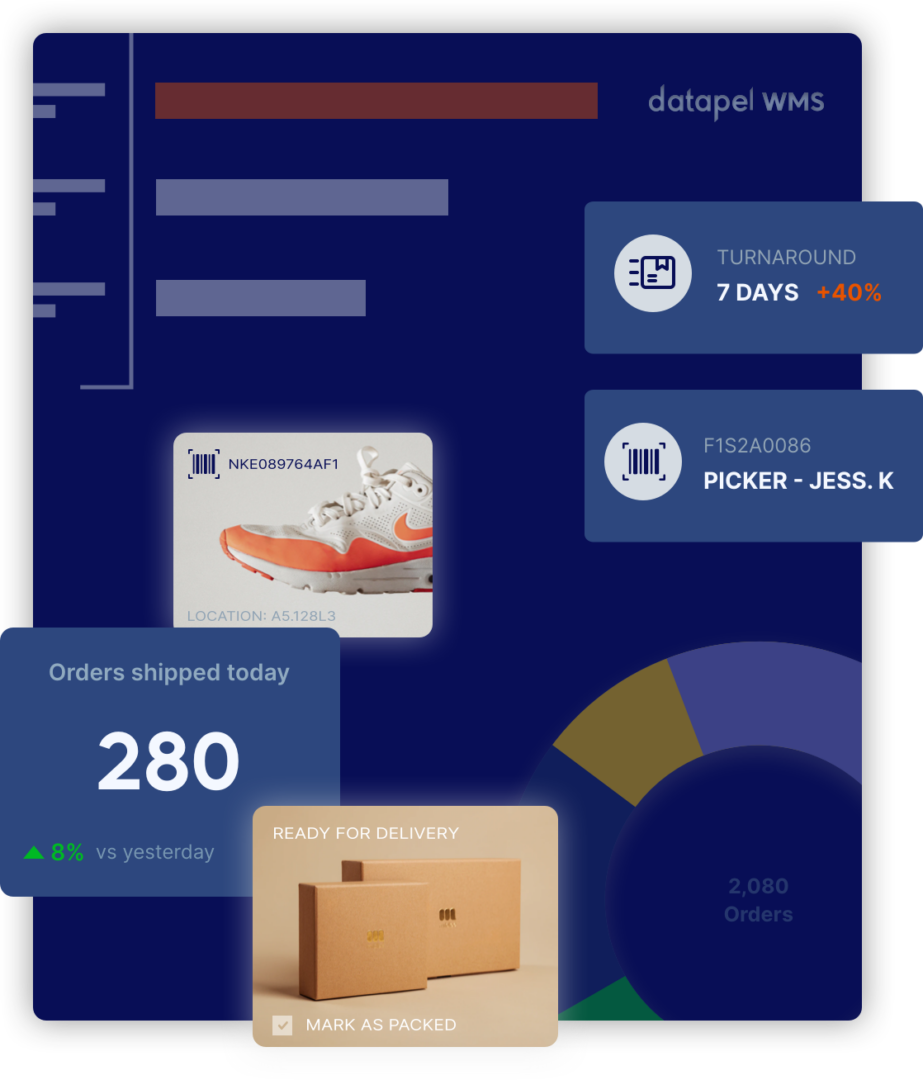9 Tips for Better Retail Inventory Management
Contents
Effective retail inventory planning is critical to the success of your business. However, mastering retail inventory management can be challenging, especially if you are running a rapidly growing company or are new to retail. Aligning stock levels with customer demand is essential to prevent stockouts or overstock situations, ensuring operational efficiency and customer satisfaction.
Fortunately, you don’t have to navigate your inventory planning hurdles alone. Join us as we take a deep dive into retail inventory management. Managing inventory costs is crucial for improving profit margins and reducing expenses. We’ll examine the retail inventory method and identify a few popular methods you can incorporate into your business model.
We’ll also reveal 9 tips that can help you manage your inventory more effectively.
What Is Retail Inventory?

Retail inventory describes all the available stock that’s currently in your inventory. While you generally track the individual stock levels of each item, you also need to maintain awareness of the cumulative value of your inventory.
Retail inventory management is the process of overseeing both stock levels and your total inventory value. Losing sight of current inventory levels can lead to stockouts, which will negatively impact customer experience. Maintaining accurate inventory data is crucial to prevent stockouts and improve customer satisfaction.
On the other hand, failing to monitor the total cost of your inventory can create cash flow challenges that threaten business continuity.
What is the retail inventory method?
The RIM (retail inventory method) is an accounting method designed to estimate the value of your store’s merchandise. This method measures the cost of inventory as it relates to the price of your merchandise.
The RIM is widely considered to be the best tool for estimating merchandise value and stock levels. However, it is only an estimate. As such, you should always engage in periodical inventory counts to verify the accuracy of this accounting method and maintain accurate inventory records.
Achieve Better Retail Inventory Management with These 9 Tips
The RIM is a good starting point for tracking and managing your inventory. However, there are several ways in which you can optimise your inventory management capabilities based on retail inventory management best practices. Specifically, we suggest that you:
1. Categorise Your Inventory
Not all inventory is equal.
Categorising inventory is an essential function of retail inventory management software. Some products will cost more and sell less frequently than hot-ticket items or trendy goods. With that in mind, you should categorise your inventory into a few priority groups. There are several ways to go about this, but a common method involves creating A, B, and C, inventory groups.
When managing an e-commerce business, it’s essential to consider various factors, including product categorisation and inventory management.
Items in group A are more costly, which means that you need fewer of them. Group B products don’t sell quite as slowly as A items, but they are more costly and slower to turn over than C items.
Handling fees in e-commerce can also come into play with these costlier products. On the other hand, Group C products are affordable and easy to sell fast, which means that you need to order them most frequently, helping minimise handling fees.
2. Track All Relevant Product Information

When setting up your retail inventory management software and processes, you must track all relevant product information as part of an effective inventory system. Some of the information you need to track includes:
- SKUs
- Lot numbers
- Barcode data
- Country of origin
You should also monitor the cost of each item. Doing so will enable you to monitor seasonal or scarcity-related price changes.
3. Conduct Audits
Remember, the RIM only provides an estimate of your physical stock and its value. Therefore, you should conduct an extensive inventory audit to maintain accurate inventory records and compare it to your estimates.
Some businesses will only conduct an audit once per year. However, others will perform monthly or quarterly audits. In between audits, most retailers will do spot checks wherein they count the physical stock of a few of their top sellers.
Regardless of which audit intervals you choose, make sure that you are conducting some form of physical stocktake regularly.
4. Assess Supplier Performance
Assessing supplier performance is a key part of the retail inventory management process. Suppliers are critical to retail inventory management. If a supplier is unreliable or frequently late with your deliveries, it will be nearly impossible to effectively maintain adequate stock levels.
As such, you should continuously assess supplier performance. If a particular supplier keeps falling short of your expectations, reach out to them and see if you can remedy the issue. Don’t be afraid to cut ties if a supplier cannot meet the needs of your business.
Read: Supplier Relationship Management
5. Leverage the 80/20 Rule
Generally speaking, leveraging the 80/20 rule is an effective strategy to manage inventory, as 80% of your revenue will be generated from 20% of your inventory. Once you identify what items fall into that 20%, prioritise managing those items to ensure that they are always in stock.
To be clear, you shouldn’t neglect the other 80% of your inventory. But your top sellers should receive the majority of your attention and focus.
6. Use Consistent Receiving Methods

Processing incoming stock is a core component of managing a retail business. It is also something that you are already doing regularly. The question is, do you have a standardised process for receiving new shipments? If not, you will inevitably encounter stock issues such as inaccurate inventory counts.
To prevent these issues, develop a consistent receiving process. Once you have done so, bring your team up to speed to ensure that every inbound order is processed the same way. Consistent receiving methods can be facilitated by retail inventory management software, which helps automate tasks, provide real-time visibility, and reduce errors.
7. Closely Track Sales
Tracking sales seems like an obvious tip. But you would be surprised how many retailers simply add up their total sales volume at the end of each day.
In addition to calculating sales volume, you need to update inventory totals and determine how many units of each item were purchased. Next, you will need to analyse this information by integrating sales and inventory data so that you can stay apprised of the latest purchasing habits.
8. Manage Restocks In-House
Some suppliers will offer to reorder inventory for you. This may seem like a convenient service that takes some responsibility off your plate. The downside is that the vendor is focused on accomplishing their goal, which is to move inventory. They are not necessarily looking out for the needs of your business.
To ensure that you do not get bogged down with unnecessary inventory, manage restocks yourself. Managing restocks is a key aspect of managing inventory. It may take a little extra work, but it will also help your business better adapt to shifting buying trends.
Read: Vendor Managed Inventory
9. Explore Retail Inventory Management Software

If you want to optimise your inventory management capabilities, you should consider exploring retail inventory management software. While many retail inventory management systems are on the market today, they’re not all equally effective.
Read: Choose the Right Rnventory Management System: Find the Perfect Match
In Closing
The dynamic solution that Datapel Cloud.WMS offers real-time insights into your inventory. You can use our powerful reporting tools to track purchasing trends, monitor stock levels, and make sure that you never run out of your best sellers.
To learn more, get a 14-day free trial with Datapel Systems today.

In my role, I oversee the development of insightful blogs that delve into the intricacies of warehouse management. Each piece reflects my dedication to empowering businesses through informative content. Through my team’s extensive experience in the industry, we aim to bring clarity to the complexities of WMS, helping businesses make informed decisions.
Join me on a journey through the ever-evolving landscape of warehouse technology as we explore the latest trends, industry insights, and practical tips to streamline your operations. Feel free to connect, and let’s embark on a collaborative exploration of how WMS can redefine your business efficiency.
Cheers to innovation, efficiency, and the exciting world of warehouse management!







